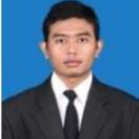International Journal of Information Engineering and Electronic Business (IJIEEB)
IJIEEB Vol. 17, No. 2, 8 Apr. 2025
Cover page and Table of Contents: PDF (size: 905KB)
Development of Past Learning Recognition Assessment Data Processing System for Professional Engineer Program Using Scrum Method
PDF (905KB), PP.68-78
Views: 0 Downloads: 0
Author(s)
Index Terms
Web Application, Lifelong Learning Recognition, Engineering, Scrum, Assessment
Abstract
The University of Lampung is one of the universities mandated to run the Professional Engineer Program (PPI) through the Past Learning Recognition (RPL) pathway. Individuals following this RPL path must have at least five years of experience in the engineering field, where their education, work, and training data from formal and informal institutions can be converted into six courses totaling 24 credits. The RPL data assessment process, if conducted manually, takes a long time and hampers the administrative process in PPI. Therefore, an effective and efficient assessment process is automated through a web-based application by developing an RPL data final grade processing system (E-RAPEL), which addresses common problems in PPI and facilitates grade administration. The system development adopts the Scrum method to enhance product performance, teamwork, and the work environment. Data collection in this study was conducted through interviews and direct observation, and the results indicate that the system facilitates the final assessment process of RPL data using black box testing. The findings show that all test components functioned as expected and reduced the time required for the RPL data final assessment process in PPI.
Cite This Paper
Trisya Septiana, Dikpride Despa, Fadil Hamdani, Deny Budiyanto, Reza Andrea, "Development of Past Learning Recognition Assessment Data Processing System for Professional Engineer Program Using Scrum Method", International Journal of Information Engineering and Electronic Business(IJIEEB), Vol.17, No.2, pp. 68-78, 2025. DOI:10.5815/ijieeb.2025.02.03
Reference
[1]N. K. Khamis, Z. Harun, M. F. M. Tahir, Z. Wahid, and M. A. M. Sabri, “Motivational factors of professional engineers and non-professional engineers in applying for license as professional engineer: A comparative study,” Int. Educ. Stud., vol. 6, no. 6, pp. 124–130, 2013.
[2]R. M. Zin, “Perception of Professional Engineers toward Quality of Worklife and Organizational Commitment: A Case Study,” Gadjah Mada Int. J. Bus., vol. 6, no. 3, p. 323, 2004.
[3]D. A. Martin, E. Conlon, and B. Bowe, A Multi-level Review of Engineering Ethics Education: Towards a Socio-technical Orientation of Engineering Education for Ethics, vol. 27, no. 5. Springer Netherlands, 2021.
[4]W. L. Eiden, “The dilemma of the professional engineer employed in industry,” IEEE CSIT Newsl., vol. 2, no. 6, pp. 7–8, 2013.
[5]Pressiden RI, “UU No 11 Th. 2014 ttg Keinsinyuran,” pp. 1–42, 2014.
[6]M. Pendidikan and D. A. N. Teknologi, “m / rm en d ikb ud ris tek ah un gu ore las i . c o htt ps : // w ww . in en d ore . in f ww // w htt ps : las i . c ikb ud ris tek,” pp. 1–9, 2022.
[7]D. Despa and L. Afriani, “Percepatan Insiyur Tersertifikasi Melalui Pelatihan Teknik Pengisian Sistem Informasi Manajemen Insinyur ( Simponi ),” vol. 2, no. 2, 2022.
[8]D. Despa, T. Septiana, F. Hamdani, and P. B. Wintoro, “Persepsi Aparatur Sipil Negara (ASN) Tentang Urgensi Insinyur Profesional Dalam Berpraktik Di bidang Keinsinyuran,” Semin. Nas. Ins. Prof., vol. 1, no. 1, pp. 2019–2022, 2022.
[9]D. DESPA, R. Widyawati, and T. Septiana, “Pelatihan Pengisian Formulir Aplikasi Insinyur Profesional (Faip) Secara Online Bagi Anggota Persatuan Insinyur Indonesia (Pii) Wilayah Lampung,” J. Pengabdi. Kpd. Masy. Sakai Sambayan, vol. 6, no. 1, p. 7, 2022.
[10]Armaeni, N. K. (2015). Kajian etika profesi keinsinyuran sipil. PADURAKSA: Jurnal Teknik Sipil Universitas Warmadewa, 4(2), 41-48.
[11]F. Trapsilawati, S. Subagyo, T. Ariyanto, M. K. Herliansyah, and S. Purwono, “Evaluasi Sistem Penilaian Rekognisi Pembelajaran Lampau,” Bul. Profesi Ins., vol. 2, no. 3, pp. 96–101, 2019.
[12]D. P. Nasution, H. Arifin, N. W. P. B. Sembiring, and S. Z. Abrari, “Implikasi Pergeseran Insinyur Dari Sektor Publik Ke Sektor Swasta,” J. PenSil, vol. 10, no. 3, pp. 154–159, 2021.
[13]R. Timings, Engineering Fundamentals. 2007.
[14]C. Gaete-Peralta and J. Huincahue, “Thinking styles and engineering: Proposals for strengthening the professional training of engineers through physics courses,” J. Phys. Conf. Ser., vol. 1702, no. 1, 2020.
[15]R. Stevens, A. Johri, and K. O’connor, “Professional engineering work,” Cambridge Handb. Eng. Educ. Res., pp. 119–138, 2015.
[16]P. Adi, “Scrum Method Implementation in a Software Development Project Management,” Int. J. Adv. Comput. Sci. Appl., vol. 6, no. 9, pp. 198–204, 2015.
[17]S. A. Nugroho, “Scrum Framework Implementation for Software Development Projects in IT Companies,” no. August, pp. 11–13, 2021.
[18]Made Sudana, Bambang Endroyo, and Sucipto, “Study on the Establishment of Professional Engineering Program in Engineering Faculty Universitas Negeri Semarang,” Int. J. Innov. Res. Adv. Eng., vol. IV, no. II, pp. 09–14, 2020.
[19]V. Hema, S. Thota, S. Naresh Kumar, C. Padmaja, C. B. Rama Krishna, and K. Mahender, “Scrum: An Effective Software Development Agile Tool,” IOP Conf. Ser. Mater. Sci. Eng., vol. 981, no. 2, 2020.
[20]K. Schwaber and J. Sutherland, “Scrum Guide V7,” Agil. Metrics Agil. Heal. Metrics Predict., no. November, pp. 133–152, 2020.
[21]Stauffer, M. (2019). Laravel: Up & running: A framework for building modern php apps. " O'Reilly Media, Inc.".
[22]Tapu Biswas, Farhan Sadik Ferdous, Zinniya Taffannum Pritee, Akinul Islam Jony, "ScrumSpiral: An Improved Hybrid Software Development Model", International Journal of Information Technology and Computer Science(IJITCS), Vol.16, No.2, pp.57-65, 2024. DOI:10.5815/ijitcs.2024.02.05
[23]E. al. Sibarani, “Metode Scrum,” Imp. J. Interdiscip. Res., vol. 2, no. 12, pp. 293–298, 2017.
[24]N. T. Rachman and D. Sushandoyo, “Analysis of scrum implementation in digital startup product,” COSTINGJournal Econ. Bus. Account., vol. 5, no. 1, p. 7, 2021.
[25]O. C. Resmi Rachmawati, Deyana Kusuma Wardani, Wifda Muna Fatihia, Arna Fariza, and Hestiasari Rante, “Implementing Agile Scrum Methodology in The Development of SICITRA Mobile Application,” J. RESTI (Rekayasa Sist. dan Teknol. Informasi), vol. 7, no. 1, pp. 41–50, 2023.
[26]T. Sundara, D. Setiawan, F. Subkhan, and F. R. Kautsar, “Scrum Implementation in Development of Online Research Application,” Indones. J. Comput. Sci., vol. 11, no. 2, pp. 404–410, 2022.
[27]D. J. C. Sihombing and F. Ferdiando, “Analysis of The Implementation of SCRUM in The Development of A BBLobster Content Management System,” J. Inf. Syst. Informatics, vol. 5, no. 1, pp. 15–30, 2023.
[28]I. F. Ashari, A. J. Aryani, and A. M. Ardhi, “Design and Build Inventory Management Information System,” J. Sist. Inf., vol. 9, no. 1, pp. 27–35, 2022.
[29]G. C. Ng, “A Study of an Agile Methodology with Scrum Approach to the Filipino Company-Sponsored I.T. Capstone Program,” Int. J. Comput., vol. 2, no. 2, pp. 68–88, 2017.
[30]M. Mousaei and T. J. Gandomani, “A new project risk management model based on Scrum framework and Prince2 methodology,” Int. J. Adv. Comput. Sci. Appl., vol. 9, no. 4, pp. 442–449, 2018.
[31]M. B. Legowo, B. Indiarto, and D. Prayitno, “Implementation of Scrum Work Framework in the Development of Quality Assurance Information System,” J. Penelit. Pos dan Inform., vol. 9, no. 2, p. 125, 2019.
[32]S. Supriyono, “Software Testing with the approach of Blackbox Testing on the Academic Information System,” IJISTECH (International J. Inf. Syst. Technol., vol. 3, no. 2, pp. 227–233, 2020.
[33]G. S. Mahendra and I. K. A. Asmarajaya, “Evaluation Using Black Box Testing and System Usability Scale in the Kidung Sekar Madya Application,” Sinkron, vol. 7, no. 4, pp. 2292–2302, 2022.
[34]P. Huriati, H. Azmi, Y. Wati, D. Meidelfi, and T. Lestari, “Black box testing on the online quiz application using the Equivalence Partitions method,” Int. J. Adv. Sci. Comput. Eng., vol. 2, no. 2, pp. 51–56, 2020.




